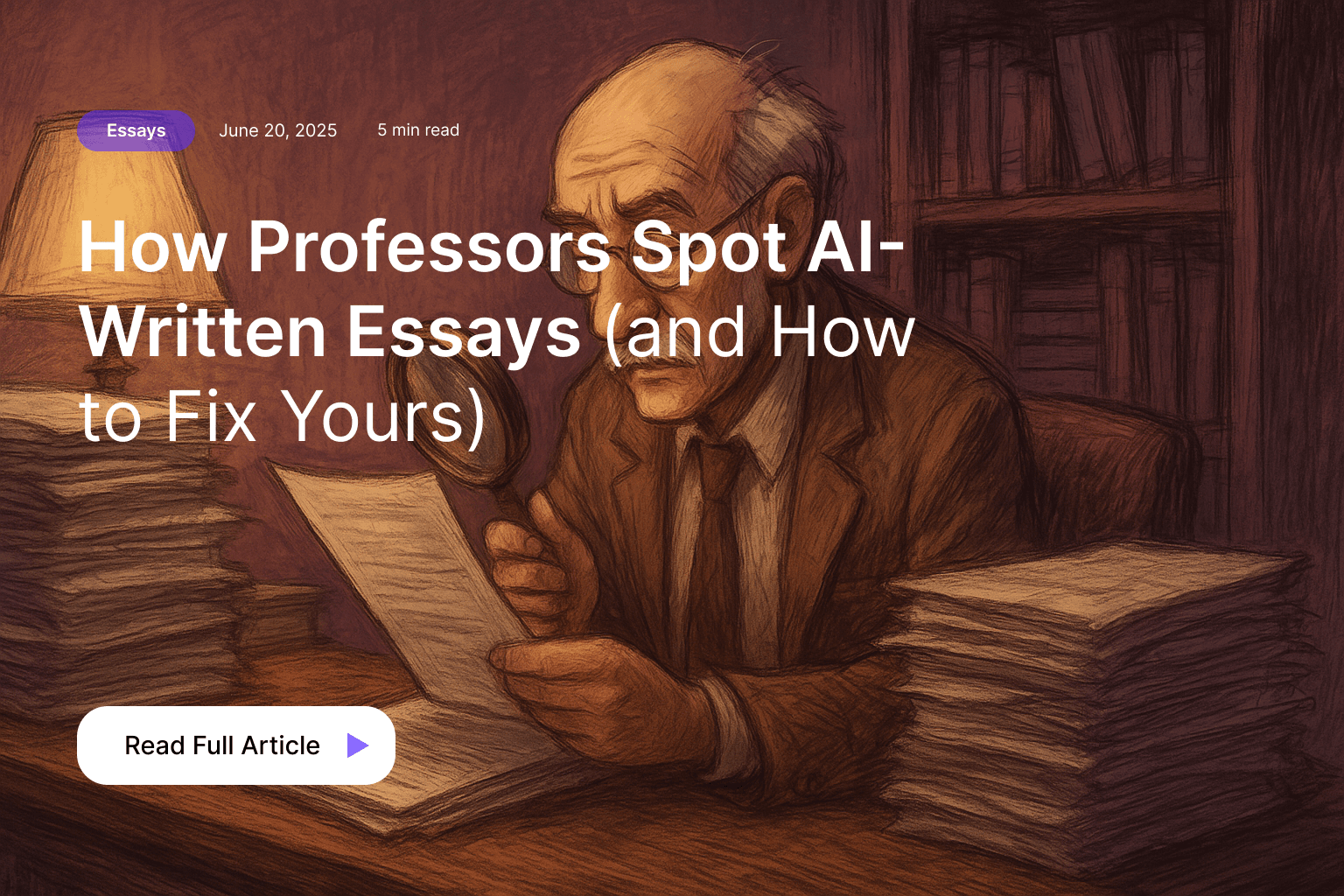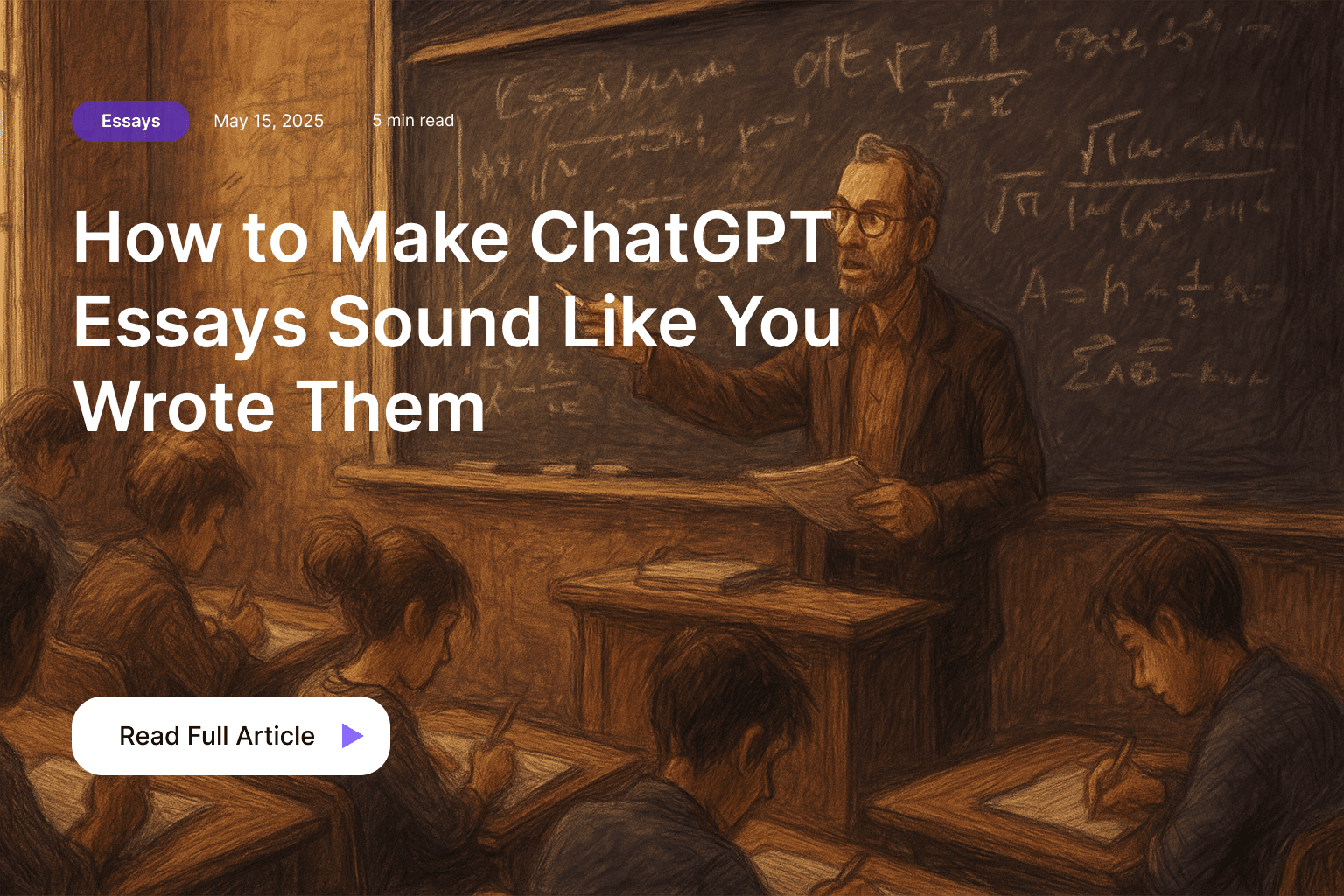If you’ve ever reread one of your own research papers and wondered, “Why does this sound so complicated?”, you’re not alone.
Most researchers aren’t bad writers. They’re just surrounded by dense literature, technical language, and formatting rules that slowly turn their writing into a maze.
Clarity is not about “simplifying” your research; it’s about making sure your argument travels clearly from your head to the reader’s. And that’s where rewriting, with a little AI help, becomes "transformative".
In this guide, we’ll look at how to rewrite your research paper for clarity: what clarity actually means in academic writing, where most papers lose it, and how modern tools like EssayTone can elevate your text without stripping away your scholarly tone.
1. Why rewriting matters more than writing
The first draft of any research paper is survival work. You’re trying to get ideas down before your deadline eats you alive. Rewriting, on the other hand, is where the paper becomes publishable.
Think of rewriting as translation, from your researcher brain to the reader’s.
You’re translating:
- from field-specific shorthand into comprehensible context
- from fragmented notes into coherent flow
- from passive observations into purposeful arguments
Yet rewriting is hard. After weeks or months of working on a topic, you lose the reader’s perspective. That’s why clarity editing is such a critical phase, and why researchers are now turning to AI-assisted rewriting for second-pair-of-eyes refinement.
2. The real meaning of “clarity” in research writing
In academic writing, clarity isn’t just about simpler words. It’s about cognitive ease, how easily a reader can follow your argument, absorb your findings, and recall your logic.
A clear paper does three things:
- Tells a story. Every section builds logically from the one before it.
- Maintains one focus per paragraph. Each idea gets space to breathe.
- Balances precision with readability. You stay accurate without overwhelming your audience.
Take this example:
Original: “The implementation of the proposed algorithm was found to demonstrate significant advantages under certain constrained simulation environments.”
Rewritten: “The proposed algorithm performed better in specific controlled simulations.”
The rewritten version doesn’t dumb down the finding, it simply removes clutter between the idea and the reader. Clarity lies in structure, not vocabulary.
3. Where most research papers lose clarity
Even strong researchers fall into predictable traps when they write. Here are the main culprits:
a) Abstract overload
The abstract often tries to summarize everything from methods, background, data, conclusions until it reads like a compressed PDF.
Fix: Lead with the problem and the key finding. You can mention methodology in one short phrase.
“This study examines how renewable energy policies influence startup innovation in emerging economies. Using 10-year panel data from 45 countries, we find a strong correlation between policy stability and green patent output.”
That’s clean, precise, and skimmable.
b) Paragraph drift
Paragraphs that start with one idea and end with another confuse reviewers instantly.
Fix: Open with a clear topic sentence. Then, rewrite each paragraph so every sentence relates back to that opening claim.
c) Jargon stacking
Jargon isn’t the enemy, overuse is. If your paragraph has more abbreviations than verbs, it’s time to rewrite.
Fix: Define each term once, then use natural phrasing wherever possible. You’re writing to your peers, not to impress them.
d) Citation overload
A chain of references (“Mark, 2017; Zhao, 2018; Kaur et al., 2019…”) can distract from your argument.
Fix: Integrate citations meaningfully, not as proof you’ve read everything, but as evidence supporting your narrative.
4. How AI can help rewrite research papers for clarity
Modern AI writing tools aren’t just “grammar checkers.” When used wisely, they act as clarity amplifiers, identifying redundancy, improving flow, and mimicking the tone of formal academic writing without making it robotic.
Here’s how researchers use AI rewriters effectively:
a) To clarify sentence structure
An AI academic rewriter can take long, winding sentences and suggest concise, fluent alternatives while keeping all your key terms intact.
Example:
Before: “The model’s predictive validity was assessed in accordance with previously established benchmarks for reliability.”
After: “We tested the model’s accuracy using standard reliability benchmarks.”
b) To balance tone and accessibility
Academic writing often swings between too casual and too stiff. Tools like Essaytone are built specifically for this balance, rewriting text to sound natural and human, while retaining academic formality.
c) To refine transitions and logical flow
AI tools can flag sudden jumps between paragraphs or missing context, suggesting smoother connectors such as “In contrast,” “Building upon this,” or “This result suggests that…”
d) To adapt for publication or peer review
When journals request revisions for readability or language clarity, rewriting with AI can save days of manual editing. It’s particularly helpful for non-native English researchers, who may struggle to match the expected tone of international journals.
5. The ethical boundary: assistance, not authorship
A growing concern in academia is where AI ends and the researcher begins.
Let’s be clear: AI should not “write your paper.” But using it to rewrite or clarify what you’ve already written is ethically comparable to having a language editor.
Here’s the distinction:
| Action | Ethically acceptable | Ethically questionable |
|---|---|---|
| Rewriting sentences for clarity | ✅ Yes | |
| Simplifying jargon or passive voice | ✅ Yes | |
| Generating new data or claims | ❌ No | |
| Fabricating citations or references | ❌ No | |
| Submitting AI-written sections as original work | ❌ No |
The goal is transparency, you remain the author of the ideas; AI is just a refinement tool. Many journals now explicitly allow AI language assistance, provided it’s disclosed.
6. A structured rewriting workflow (with AI support)
If you’re preparing a paper for submission or revision, use this 5-step rewrite routine:
Step 1: Outline clarity before text clarity
Write down your main argument in one sentence. Then, list each section’s purpose. If a paragraph doesn’t serve that purpose, cut or merge it.
Step 2: Rewrite each section around a core question
For example:
- Introduction → What gap am I addressing?
- Methods → How did I test it?
- Results → What did I find?
- Discussion → Why does it matter?
- Conclusion → What comes next?
Step 3: Run your draft through an AI academic rewriter
Upload your text to a rewriting tool like Essaytone’s AI-to-Human Academic Rewriter, which detects robotic phrasing, improves flow, and humanizes tone while keeping technical accuracy.
Focus on sections where reviewers tend to comment “unclear” or “too dense”, usually the introduction and discussion.
Step 4: Compare revisions, not replacements
Don’t accept every AI suggestion. Compare both versions and keep what improves precision or rhythm. Think of it as guided peer feedback, not automation.
Step 5: Final human pass for nuance and voice
Read your rewritten paper aloud. If it sounds natural, you’ve succeeded.
If it sounds like a machine, add back your phrasing quirks or transitions. The most readable research papers have personality within professionalism.
7. The impact of clarity on citations and readership
Here’s something few talk about: clear papers get cited more.
Studies in science communication consistently show that papers written in accessible, well-structured prose reach broader audiences — including cross-disciplinary readers.
When your paper is easy to read:
- It’s easier for other researchers to cite.
- It’s easier for journalists or policy writers to summarize.
- It’s easier for reviewers to approve.
Clarity isn’t just aesthetics, it’s reach.
8. Common myths about rewriting with AI
Let’s clear up a few misconceptions researchers often have:
Myth 1: AI rewriting ruins academic tone.
Reality: Not when tuned for academic contexts. Tools like Essaytone are built to preserve scholarly style while removing redundancy.
Myth 2: It will be flagged by AI detectors.
Reality: AI detection focuses on generative patterns (predictable phrasing, lack of nuance). Rewriting tools that humanize existing text reduce those patterns, they don’t create them.
Myth 3: Reviewers will notice.
Reality: Reviewers don’t grade style; they grade clarity. If your paper reads more coherently, they’ll thank you, not question you.
9. The future of rewriting: collaboration, not substitution
AI isn’t replacing academic editors; it’s extending their reach.
The future of rewriting looks like this: researchers draft, AI polishes, and editors finalize, a loop of clarity enhancement rather than content creation.
Imagine an ecosystem where every thesis, preprint, and journal article is readable beyond its discipline. That’s what AI-assisted rewriting enables not shortcutting research, but making it communicable.
Rewriting a research paper is not an act of vanity; it’s an act of generosity. You’re helping your reader understand what you worked so hard to uncover.
So when you use an AI academic rewriter, don’t think of it as outsourcing your writing, think of it as upgrading your clarity. Because your research deserves to be read and not just archived.




